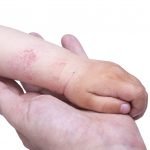Homeopathy: Keynotes & Restoration of Health
Florence McPherson, ND
As a homeopath, I am always close to or aware of the operation of the vital force in each of my patients – that force that animates the physical body in feelings, functions, sensations and awareness – the vital force that exists in all living things and gives life or autocracy to all physical life forms. This life force or energy becomes the basis of all operations in the person – physical, mental, emotional, and spiritual. It is the life force in health that keeps bodily functions balanced and in order. It is this same life force in illness or dis-ease that creates imbalance or symptoms in the body, or alterations in form, feelings, and functions in the body.
When we are focused in this manner, we can gain insight into how to enhance a patient’s health, leading him or her on a path to wellness by focusing on the whole life force rather than just their diagnosis. As a homeopath and physician, it is necessary to understand disease and its processes – causation, prodrome, disease symptoms, exacerbations, associated symptoms, and alterations to the physical body; yet, diagnosis is a piece of the homeopathic or vitalistic treatment. Whether I am prescribing a naturopathic treatment protocol or prescribing a single homeopathic remedy, I am attuned to the process of the vital force in each individual patient. A patient may have an endocrine imbalance, a bacterial infection, a viral infection, etc; it is not only the physical but also the totality of symptoms and the vital force of the patient that is to be cured or assisted on a path to wellness in each instance.
Why Is Homeopathy Unique?
What is vital force? In Samuel Hahnemann’s Organon of the Medical Art, 1st through 6th editions, he refers to the life force as “dynamis,” “wesen,” and “genius” to describe this animated force existing in nature. The term genius is found widely in homeopathic literature. Reading the Organon, written in German and subject to translation, one finds difficulty finding proper English words to express what he was intending to teach via these terms in his writings. However, we can understand the concept through his work.
In Aphorism 15, in the 6th edition of the Organon of the Medical Art, Hahnemann writes,
The suffering of the morbidly mistuned, spirit-like dynamis (life force) enlivening our body in the invisible interior, and the complex of the outwardly perceptible symptoms portraying the present malady, which are organized by the dynamis in the organism, form a whole. They are one and the same. The organism is indeed a material instrument for life, but it is not conceivable without the life imparted to it by the instinctual, feeling and regulating dynamis, just as the life force is not conceivable without the organism. Consequently the two of them constitute a unity, although in thought, we split this unity into two concepts in order to conceptualize it more easily.
(Hahnemann S, 1997)1
How does restoration of health come about when prescribing to the individual patient’s vitality or dynamis combined with the physical or totality of symptoms? In aphorism 17 of the Organon, 6th ed, Hahnemann expresses the following:
When a cure occurs through the taking away of the entire complex of perceptible signs and befallments of disease, the internal alteration of the life force which is lying at its base (consequently the totality of the disease) is simultaneously lifted. It follows, therefore, that the… practitioner has only to take away the symptom complex in order to simultaneously lift and annihilate the internal alteration (i.e., the morbid mistunement of the life principle) and consequently the totality of the disease, the disease itself. When the disease is annihilated, health is restored.
(Hahnemann S, 1997)1
This paradigm frees the physician to assist any patient, any diagnosis, on the road to health and toward a restoration of health. With homeopathy – using diluted, vitalistic substances and according to basic homeopathic principles – these homeopathically prepared medicinal substances are the only substances that have the ability to match this way of viewing disease and health, and the only substances bringing about – in the patients and their vitality – a restoration of health.
In my practice, I have witnessed disease and health change with the simplest of prescriptions, both homeopathic and naturopathic, for all kinds of symptoms, mental states, and diagnoses. Each homeopathic remedy I use currently and in past prescriptions has its own vitality, its own dynamis which continues to unfold and make itself known with each subsequent prescription. The practice of homeopathy becomes a dedication – a life-long study, a commitment to a scientific paradigm shift which can only be learned, honed, and understood by experience through prescribing. For the purpose of this article, I attempt to highlight important concepts in this scientific way of viewing health, disease, and cure.
Keynote Rubrics
Samuel Hahnemann experimented on humans by giving his medicinal substances or homeopathic remedies to groups of people, then recording symptoms that occurred in these individuals over specific periods of time, based on the action of each medicinal substance. These experiments were called homeopathic provings. The provings were repeated multiple times and on different body types, populations, and constitutions. The symptoms were compiled into a repertory categorized by organ system and listed via alphabetized symptoms as to which homeopathic remedy or medicinal substance could cure that listed symptom. These symptoms were called rubrics. Each homeopathic remedy has specific keynote rubrics that point to its medicinal action or ability to cure or affect a person or organism.
Prescribing using “keynotes” of medicinal substances or homeopathically prepared remedies is a cornerstone principle, or way of prescribing, in homeopathic medicine. I would like to share my clinical experience with 3 homeopathically prepared remedies, their dynamis, their keynotes, and scope of action in the potential restoration of health in patients. The keynotes of the following remedies listed are not an exhaustive list. The potential for each of these remedies is vast in its ability to restore vitality, thus heal physical suffering in a patient.
Arnica Montana (Leopard’s Bane)
- Produces conditions upon the system quite similar to those resulting from injuries, falls, blows, contusions.
- After traumatic injuries, overuse of any organ, strains
- Traumatism of grief, remorse or sudden realization of financial loss
- Limbs and body ache as if beaten; joints as if sprained
- Ecchymosis and hemorrhages
- Black and blue spots
- Sore lame bruised feeling
- Influenza
- Worse, least touch; motion; rest; wine; damp cold
- Better, lying down, or with head low
(Boericke W, 1927)2
I began treating a young woman in her early 30s in my practice, who had come to my office for treatment for idiopathic nausea and dizziness and a periodic feeling that she would faint. All lab testing and clinical workups were unremarkable.
After a month or so of treatment and addressing possible obstacles to health and vitality, she shared that she had not had a gynecological exam in a few years due to having experienced a traumatic gynecological procedure. She felt uncomfortable being touched, and felt so traumatized by the event that it was affecting her sexual relationship with her partner and creating what she thought were hormone imbalances, ie, her symptoms.
In listening to this patient in my office that day, it was very clear that this “procedure or incident” that she was re-telling was an obvious trauma affecting her physiology via her symptoms, and her emotional and relationship life. My perception of what she had experienced or felt was unimportant. It was how her expression, her story, her feeling of being traumatized, was affecting her life force and body that was important. Listening – as the unprejudiced observer, allowing the disease to reveal itself, I gave her a few doses of homeopathic Arnica montana 30C, and subsequently was able to do a gynecology exam for the patient at a future visit. It seemed like a great relief to her, a milestone, that she was able to complete the exam; this consequently helped her fear of being touched and her fear or discomfort with sexual intimacy. The relief was apparent in the exam room after the procedure. With further treatment, this patient was given a follow-up remedy that led her into a further symptom-free picture and a continued restoration of health and vitality.
Each patient, each one of us, is a work in progress.
Thuja Occidentalis (Arbor Vitae)
- The main action of thuja is on the skin and genito-urinary organs, …whose chief manifestation is the formation of wart-like excrescences upon mucous and cutaneous surfaces- fig-warts and condylomata
- Ill effects of vaccination
- Female: warty excrescences on vulva and perineum. Profuse leucorrhea; thick, greenish. Polypi; fleshy excrescences. Ovaritis worse left side, at every menstrual period.
- Polypi, tubercles, warts epithelioma, naeva, carbuncles; ulcers, especially in ano-genital region
- Worse, at night, from heat of bed; at 3am and 3pm, from cold damp air; after breakfast; fat, coffee; vaccination
(Boericke W, 1927)2
A young married woman in her late 20s came to my office for possible assistance in becoming pregnant. She had been to a fertility specialist and had multiple attempts at in-vitro fertilization (IVF); one was successful but lost due to a nonviable fetus/pregnancy. She came to see me shortly after this loss, feeling desperate and distraught.
During the first appointment/interview, which went on for close to 1.5-2 hours, there were continuous expressions of certain symptoms that the patient kept coming back to while she talked: A history of warts in childhood, feeling – or, as she expressed “being aware” of – left ovarian pain or twinges before and during menstruation despite suspicion of tubal factor infertility. The patient’s main expression was of guilt and remorse, as if she had done something wrong to cause her circumstance. [Thuja can have this “expression” of guilt in the vital force.] She had developed a persistent insomnia, waking around 3 AM and anxious, without being able to go back to sleep. She was crying throughout the appointment and was fearful that she would never be able to have a child with her husband, whom she desperately loved and wanted a family with. She did not want to try IVF again or to continue with the fertility specialist. She had developed gas and bloating, with a feeling as if there was movement in the abdomen. After careful analysis, I prescribed Thuja occidentalis 10M. After 2-3 doses over a few months time, and about a year later, I received an email with a picture of her baby boy! Needless to say, she was vitally happy.
Not all cases will yield this result. We prescribe to people and vitality in homeopathy, not to disease. The vital essence of the patient has to have a match to the vital essence of the remedy that we prescribe medicinally. These keynote symptoms are often reliable in leading us to the correct remedy.
Pulsatilla Nigricans (Wind Flower)
-
The weather-cock among remedies
-
The disposition and mental state are the chief guiding symptoms to the selection of Pulsatilla.
-
Sad, crying readily; weeps when talking; changeable, contradictory
-
The patient seeks the open air; always feels better there, even though he is chilly
-
Symptoms ever changing
-
Thirstless, peevish, and chilly
-
Discharges thick, bland and yellowish-green
-
Wide awake in the evening
-
Pressure upon the chest and soreness
-
Worse: from heat, rich fat food, after eating, towards evening, warm room
-
Better: open air, motion, cold applications, cold food and drinks, though not thirsty
(Boericke W, 1927)2
Early in my practice, I met an associate during a business meeting that made a remarkable impact in my life as a prescriber. During one of our meetings, he pulled me aside and literally outside to the front of the building. “Doc can you help me?” He started crying. “I can’t bear to be inside, I can’t sleep, I can’t focus, and I can’t stop crying. I just broke up with a woman; I don’t understand what’s happening but it’s getting in the way of my functioning on a daily basis.” I could see he was distraught.
I saw him the following morning in my practice. He was a 58-year-old male single on a dating site, looking for a companion. He met this woman with whom he had a relationship over the course of a few months. She had just broken the relationship off a few days prior. He expressed that he did not understand why, couldn’t stop crying, didn’t understand why he was so devastated and completely confused about what was going on for him. He just wanted to relax, sleep, and stop crying.
After taking his case, I realized his keynote symptoms were very clear for Pulsatilla nigricans, so I prescribed a 200C and asked him to check in with me the following day. The next day he showed up at my office seeming calmer and more able to go on with his activities of daily living. I told him to re-dose the remedy if he felt he was going back into his former distraught state.
I saw him a month later and he had moved on. He was still sad about losing the relationship but not distraught, and he began dating again. In the materia medica, Pulsatilla is known to be a “pre-eminently female remedy, especially for mild, gentle yielding disposition.” This patient’s vitality, expressed through his totality of symptoms, was clearly expressing Pulsatilla. Remember, he took me outside in the open air to talk and where he told me he was feeling better, period. Listening as the un-prejudiced observer, I was able to “hear” the dynamis and prescribe the appropriate homeopathic remedy.
Summary
As homeopathic prescribers, we often fall into a pattern of over-analyzing cases, reading more into symptoms or personalities, making assumptions, or getting stuck on static remedy pictures, etc… which ultimately lead us astray from the correct homeopathic remedy prescription. Principles of prescribing and philosophy are clear and concise, as laid out in Hahnemann’s Organon of the Medical Art. It is vast and deep material, offering us a different scientific paradigm with which to help our patients heal.
 Florence McPherson, ND, is a naturopathic doctor specializing in homeopathy and women’s health. She is an adjunct clinical and didactic professor of homeopathy at the College of Naturopathic Medicine at the University of Bridgeport in Connecticut. Dr McPherson is currently teaching a weekly introductory Organon study course for lay practitioners at her office in Milford, CT, where she has practiced since 2004 and continues to see patients and take homeopathic cases. In 2013 she attended the International Academy of Classical Homeopathy (IACH) in Alonissos, Greece, to study with professor George Vithoulkas, and is holding an annual conference in Bridgeport to continue IACH and homeopathic teachings. Her website is www.drflomcpherson.com. Email: [email protected]
Florence McPherson, ND, is a naturopathic doctor specializing in homeopathy and women’s health. She is an adjunct clinical and didactic professor of homeopathy at the College of Naturopathic Medicine at the University of Bridgeport in Connecticut. Dr McPherson is currently teaching a weekly introductory Organon study course for lay practitioners at her office in Milford, CT, where she has practiced since 2004 and continues to see patients and take homeopathic cases. In 2013 she attended the International Academy of Classical Homeopathy (IACH) in Alonissos, Greece, to study with professor George Vithoulkas, and is holding an annual conference in Bridgeport to continue IACH and homeopathic teachings. Her website is www.drflomcpherson.com. Email: [email protected]
References
- Hahnemann S. Principles of Cure. In: O’Reilly WB. Organon of the Medical Art. 6th ed. Redmond, WA: Birdcage Books; 1997: 69-71.
- Boericke W. Materia Medica with Repertory. 9th (Pocket Manual). Philadelphia, PA: Boericke & Runyon; 1927.










